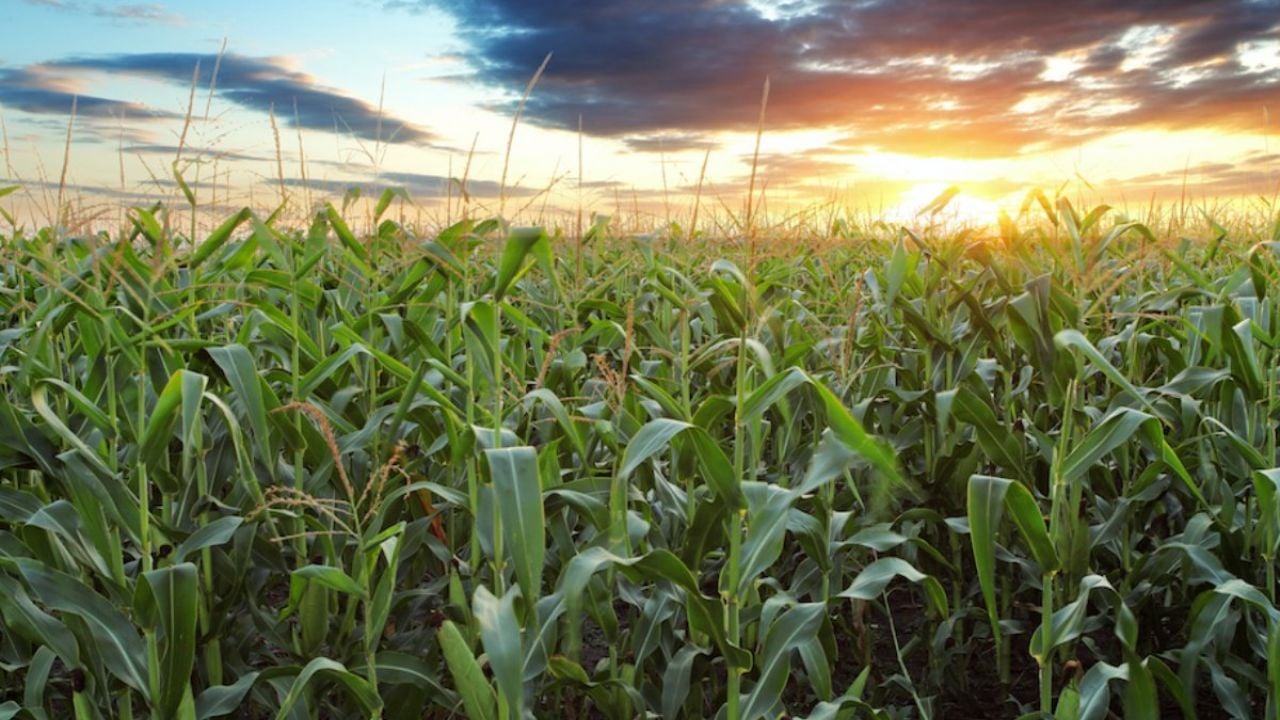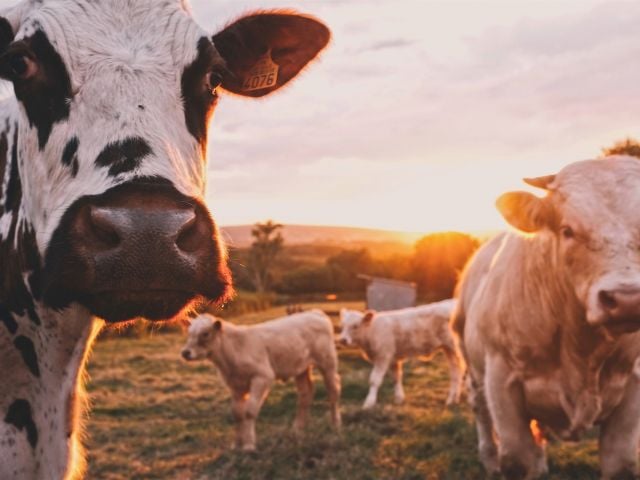
In the past five years, some farmers across the country may have dipped into three types of taxpayer-funded federal farm support to collect a staggering $113.9 billion, according to EWG’s newly updated Farm Subsidy Database.
And the House-passed budget reconciliation bill could make this “triple dipping” problem even worse. It would do this by increasing funding for commodity program subsidies, and by making it easier for already wealthy farmers to qualify for more payments.
Farm subsidies already favor the largest and wealthiest farms, at a time of high farm and household incomes. If the bill – currently pending in the Senate – becomes law, it will further tilt the playing field against small family farmers.
And the increases in subsidy payments would be funded by cuts to the country’s primary food assistance program at a time when food prices are going up.
Farmers have already benefited from the astonishing amount of money in these subsidy payments, as highlighted in EWG’s analysis. The billions in Department of Agriculture payments between 2020 and 2024 are from three sources: crop insurance, traditional commodity farm subsidy programs and ad hoc programs set up by the first Trump administration.
The three USDA farm support program category payments covered five individual programs:
- An indemnity payment from the taxpayer-subsidized federal Crop Insurance Program.
- A payment from one of two traditional subsidy programs tied to crop prices or revenues, the Price Loss Coverage program, or PLC, and the Agricultural Risk Coverage program, or ARC.
- Payments from two programs designed to offset the effects of President Donald Trump’s trade war, called the Market Facilitation Program, or MFP, and Covid-19, called the Coronavirus Food Assistance Program, or CFAP.
If the budget reconciliation bill passed by the House clears the Senate as is and becomes law, the likelihood of farmers getting paid multiple times for the same crop growing year would go up.
The bill would increase crop price guarantees and make 30 million additional acres of farmland eligible for subsidy payments, which would expand ARC and PLC payments dramatically. During the 10 years the bill covers, farm subsidy and crop insurance spending would go up by $52.3 billion.
Rice, peanut and cotton farmers in a handful of Southern states would benefit the most from these changes.
Three farm support categories paid farmers over $100 billion
Farmers collected $113.9 billion between 2020 and 2024 from the five programs. (See Figure 1.) The largest share of payments were crop insurance indemnities.
Crop insurance paid out 61% of total payments from all programs, or $68.9 billion, over the five years. Crop insurance payments in 2022 were the highest in the program’s history, at over $19.4 billion. The second highest payments ever, $17.7 billion, were made in 2023.
Payments from the ARC and PLC commodity programs made up $9.6 billion, while MFP paid out $3.8 billion and CFAP accounted for $31.6 billion. Most MFP payments were made in 2018, 2019 and 2020. The vast majority of CFAP payments were made in 2020 and 2021.
Figure 1. Total payments were the highest in 2020 but remained high at over $13.9 billion in 2024.

Source: EWG, from the USDA Risk Management Agency, Summary of Business data, and Farm Service Agency, Payment Files Information
Farmers in 3,124 counties across the country received payments from at least one of the three farm support categories. And in 2,697 counties, or 86%, farmers collected payments from all three. CFAP had the largest reach, with farmers in 98% of the 3,124 counties receiving payments.
Half of all payments from these five programs, $57.4 billion, went to farmers in just seven states, in descending order of largest payments: Texas, Kansas, North Dakota, California, Nebraska, Iowa and Minnesota. The payments were very highly concentrated in just a few states – farmers in Texas and Kansas alone accounted for 22% of all payments.
Farmers and taxpayers pay into crop insurance premiums every year. Taxpayers shoulder 63% of the cost, on average, and indemnity payments are made from total premiums collected. Taxpayers foot all – 100% – of the cost of traditional commodity farm subsidy programs, MFP and CFAP. An increase in commodity subsidies, as proposed by the budget bill, would send considerably more taxpayer money to farmers.
Subsidies benefit large farms the most
The budget bill would send more money to the largest commodity farmers at a time when farm income is already high.
Net farm income was above the 20-year average each year between 2021 and 2024, and 2025 is forecast to have the second highest net farm income ever, behind the record high in 2022. (See Figure 2.)
Figure 2. Net farm income was high in recent years.

Source: EWG, from the USDA Economic Research Service, Farm Sector Income & Finances – Farm Sector Income Forecast
Farm household income and wealth are also significantly higher than the average U.S. household. In 2023, the median farm household income was $97,984, much greater than the median U.S. household income of $80,610. And the levels of wealth of 95% of farm households are above the median U.S. household.
Across all farm subsidy programs, the largest and wealthiest farms already get the most money. The budget bill would make the situation worse. In 2024, the top 10% of commodity subsidy recipients collected 65% of the payments, and the top 1% alone got 23% of the payments, with an average payment of over $100,000 per recipient.
Farmers whose annual income tops $900,000 don’t qualify for commodity subsidies. But they can get premium subsidies and indemnity payments from the Crop Insurance Program. And the budget bill would erode this long-standing income limit, so millionaires can more easily receive funding from other farm programs, like disaster and conservation programs.
Making triple dipping more frequent
The pending budget bill would greatly increase spending on farm subsidies and crop insurance, going up by $52.3 billion in 10 years. The bill promotes triple dipping and sending more subsidies to wealthy farmers, while drastically cutting the Supplemental Nutrition Assistance Program, making it harder for poor people to receive anti-hunger assistance.
Because of multiple different provisions, the bill would raise the odds that a farmer could receive payments in a single year from multiple different support programs. The bill increases farm subsidies in multiple ways, including:
- Expanding crop price guarantees by 10% to 20% for all covered crops.
- Allows farmers to add 30 million additional acres of farmland as land eligible for subsidy payments – a 12% increase in the number of acres eligible for such payments.
- Raises payment limits from $125,000 to $155,000 per person and would allow every member of a farm organized as a pass-through entity, including joint ventures, S corporations or limited liability corporations, to collect up to $155,000 a year each.
- Greatly favors rice, peanuts and cotton growers in the South. The bill would expand payments to farmers of rice by 185%, peanuts by 117% and seed cotton by 116%.
Lawmakers should not cut desperately needed food assistance to help finance more subsidies for the wealthiest farmers. Increasing the likelihood of triple dipping into multiple farm support programs by expanding subsidies at the expense of hungry people would cause serious harm to millions while benefiting relatively few farmers.

